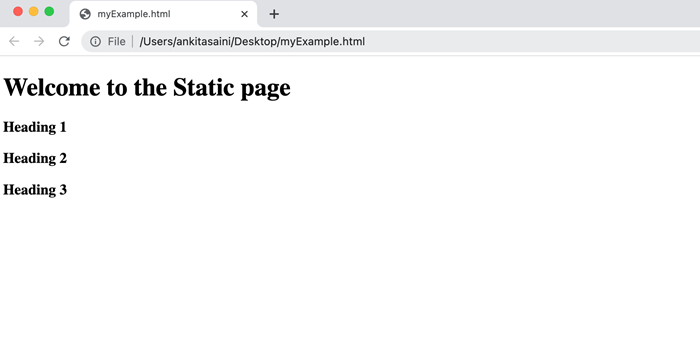
- AJAX Tutorial
- AJAX - Home
- AJAX - What is AJAX?
- AJAX - History
- AJAX - Dynamic Versus Static Sites
- AJAX - Technologies
- AJAX - Action
- AJAX - XMLHttpRequest
- AJAX - Sending Request
- AJAX - Types of requests
- AJAX - Handling Responses
- AJAX - Handling Binary Data
- AJAX - Submitting Forms
- AJAX - File Uploading
- AJAX - FormData Object
- AJAX - Send POST Requests
- AJAX - Send PUT Requests
- AJAX - Send JSON Data
- AJAX - Send Data Objects
- AJAX - Monitoring Progress
- AJAX - Status Codes
- AJAX - Applications
- AJAX - Browser Compatibility
- AJAX - Examples
- AJAX - Browser Support
- AJAX - XMLHttpRequest
- AJAX - Database Operations
- AJAX - Security
- AJAX - Issues
- Fetch API Basics
- Fetch API - Basics
- Fetch API Vs XMLHttpRequest
- Fetch API - Browser Compatibility
- Fetch API - Headers
- Fetch API - Request
- Fetch API - Response
- Fetch API - Body Data
- Fetch API - Credentials
- Fetch API - Send GET Requests
- Fetch API - Send POST Requests
- Fetch API - Send PUT Requests
- Fetch API - Send JSON Data
- Fetch API - Send Data Objects
- Fetch API - Custom Request Object
- Fetch API - Uploading Files
- Fetch API - Handling Binary Data
- Fetch API - Status Codes
- Stream API Basics
- Stream API - Basics
- Stream API - Readable Streams
- Stream API - Writeable Streams
- Stream API - Transform Streams
- Stream API - Request Object
- Stream API - Response Body
- Stream API - Error Handling
- AJAX Useful Resources
- AJAX - Quick Guide
- AJAX - Useful Resources
- AJAX - Discussion
Ajax - Dynamic Versus Static Sites
Website is a collection of multiple but related web pages that contains multimedia content like text, images, videos, and audio. Each website present on the internet has their own separate URL through which we can access using web browsers. For example − https://www.tutorialspoint.com/.
Website of two types −
Static Website
Dynamic Website
Static Website
A static website is a website in which the web pages returned by the server are prebuilt source code files that are written in simple HTML and CSS. The content of the static website is fixed, which means the content of the website can only be changed by the owner(manually) of the website, are allowed to change the content of the static website on the server side. Or we can say that static websites are those websites in which the content of the website can't be manipulated or changed from the server's side.. A static website does not require any scripting languages. For example,

Dynamic Website
A dynamic website is a website in which the content of the web pages is dynamic, which means the information on the website can change automatically according to the input given by the user. Dynamic websites required back-end databases and scripting languages like PHP, Node.js, etc. To get good flexibility dynamic website require a more complex back end. Examples of dynamic websites are Netflix, Facebook, Twitter, etc.

Dynamic Versus Static Website
Following are the difference between dynamic and static websites −
| Static Website | Dynamic Website |
|---|---|
| The content of the website can not be changed at runtime. | The content of the website can be changed at runtime. |
| There is no interaction with the database. | It interacts with the database very efficiently. |
| It loads faster on the web browser as compared to a dynamic website. | It loads slower on the web browser as compared to a static website. |
| Development cost is cheap. | Development cost is high. |
| It does not require a content management system. | It required a content management system. |
| It doesn't require scripting languages. | It required scripting languages. |
| To develop a static website we required HTML, CSS, and Javascript. | To develop a dynamic website we required web languages like HTML, CSS, and Javascript along with server-side languages like PHP, Node.js, etc. |
| It delivers the same data/content every time the page loads. | It can deliver different content/data every time the page loads. |
| It has poor scalability. | It has good scalability. |
Conclusion
So these are the major differences between dynamic and static websites. Hence developers and users prefer dynamic websites over static websites. Now in the next article, we will learn about AJAX technologies.